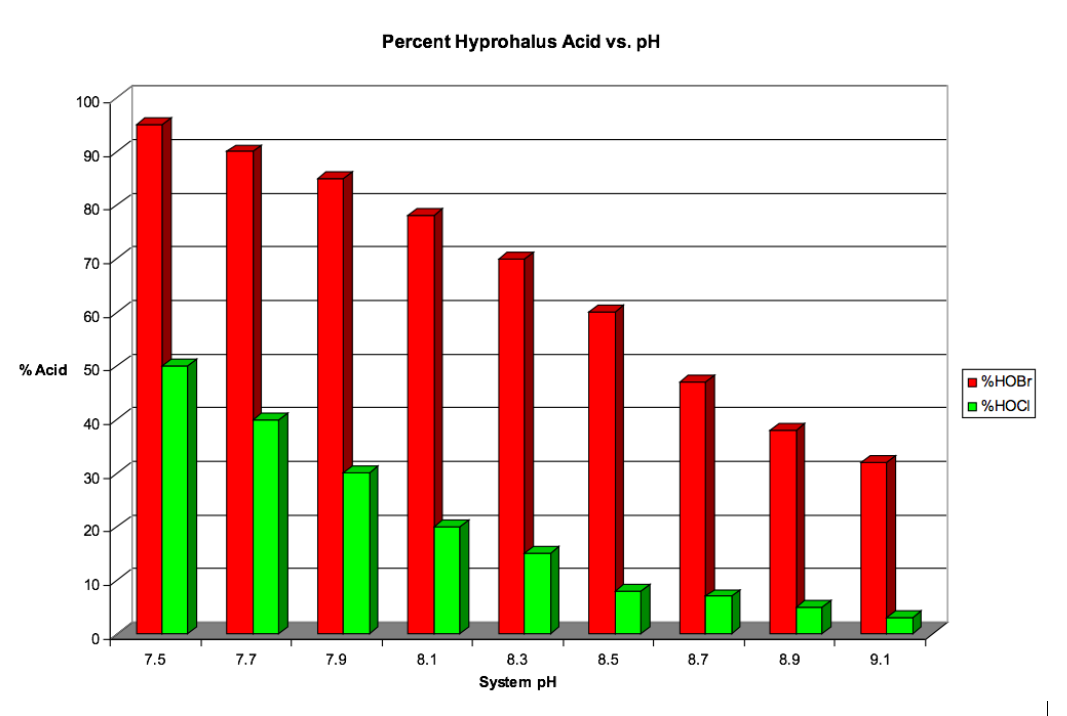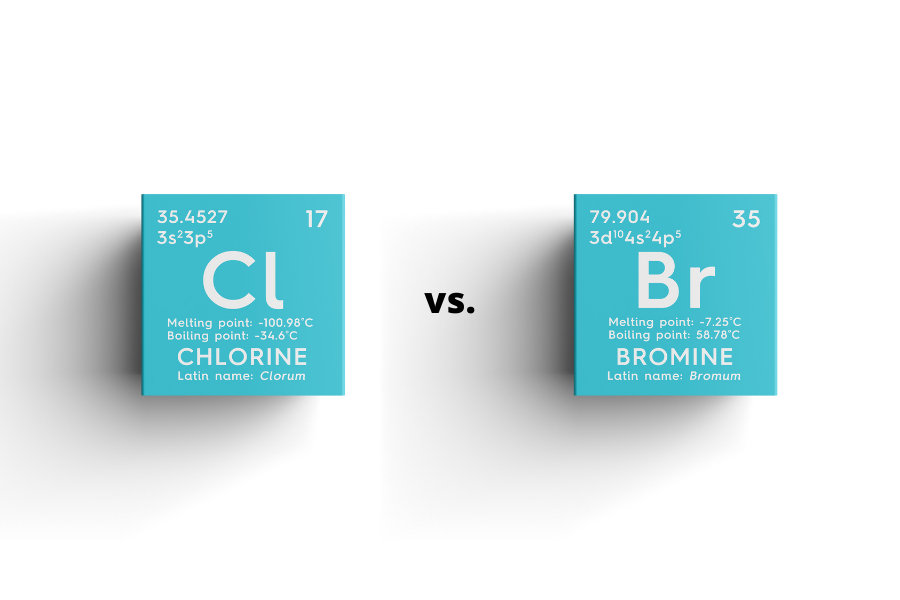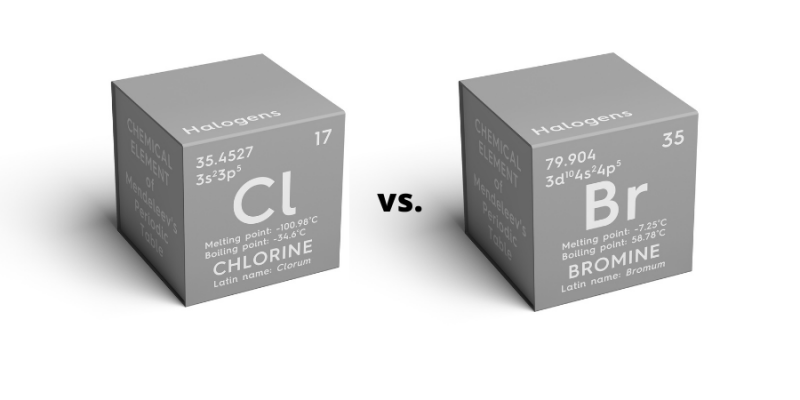
Oxidizing Biocides: Chlorine vs Bromine
When operating an open recirculating system, it’s critical to control microbiological fouling and growth. Chemicals that can control such fouling fall broadly into two categories: oxidizing and non-oxidizing biocides. (See our article on Best Biocides for Use in Cooling Towers.) Oxidizing biocides basically kill microorganisms by destroying their cell walls.
Chlorine and bromine are the two most common oxidizing biocides used in cooling tower systems to minimize growth. They each have their strengths. Here’s a quick summary of the pros and cons of each choice from the team at Chemtex.
Chlorine vs Bromine as a Biocide
When you compare purchase prices of chlorine and bromine, chlorine is the clear winner in terms of price per pound. However, there are several factors to weigh when comparing the two. First of all, it is general knowledge that on a one to one feed comparison, chlorine is more corrosive than bromine.
When sodium hypochlorite is purchased, you typically buy it at 12% active, but it should be noted that it degrades quickly in the drum. If there is a small system or there is minimal biocide use relative to inventory, the material fed that you think is 10-12% chlorine is really only 4-5%. To maintain control, feed rates may need to be increased dramatically over time. By the time you get to the bottom of the drum, it might be only 5% active–feed rates might be doubled to get equal input of hypochlorite.
Secondly, chlorine is pH dependent, so when the water being treated has a high pH, chlorine is less effective.

The active biocidal portion of the chlorine is hypochlorous acid which is a good biocide. But because tower waters often stabilize at a pH near 9.0, considerable amounts of chlorine will need to be added to attain a desired free chlorine residual. Furthermore, if the tower system has a large organic load, it consumes chlorine which demands operators add even more chlorine to maintain a residual. This loading can result from plant processes or from ambient pollen, dust, dirt or even smoke. This additional feed of chlorine needed to overcome the organic loading demand and invites greater potential for corrosion.
Just because sodium hypochlorite is is cheap, it does not mean that it won’t contribute positively to the overall protection and preservation of the system.

Bromine as a Biocide
Bromine is more expensive to purchase per pound. It is typically available at 16% as hypobrompus acid and is often stabilized so it doesn’t degrade or breakdown. Bromine is more effective than chlorine at high pH levels. Hypobromous acid is a very effective biocide as are the other bromine compounds and because all bromine compounds have biocidal properties, it offers a broader kill spectrum. Because several bromine compounds have biocidal properties, it allows us to set total bromine as the target residual rather than free chlorine. Total bromine will normally provide for microbiological control. And again, on a one to on comparison, bromine is less corrosive than chlorine.
Choosing the Right Oxidizer to Feed
When you are determining the proper oxidizing biocide to feed, be sure to consider all aspects of the tower water. If the pH exceeds 8.5, you should probably lean towards bromine. Is there is a considerable organic fouling load? Then bromine is a better choice. All factors and specifics for each system need to be considered. One application may seem like the use of chlorine is best. Corrosion coupon analysis’ prove it to be effective and not negatively affecting corrosion. An application down the street, using the same make up water may prove chlorine to be a poor choice and bromine is better. Don’t assume that inexpensive chlorine is the perfect application, and don’t consider bromine to always be the right choice. Do your job–use science to prove the proper oxidizer.
Halogens Represents Kill Potential
Total halogen is representative of the kill potential.
Testing can monitor three types of oxidizer residuals:
–Free halogen residual: This is the concentration of unreacted chlorine available to kill microorganisms, and this is generally considered the best measure of biocidal efficacy when chlorine is fed. Target residuals will be based on whether it is fed continuously or on an intermittent basis.
–Total halogen residual: This figure refers to the sum of both free and combined chlorine and/or bromine residuals. If bromine compounds are added, total residual can be used as control for feed. And, just like when chlorine is fed, residuals targeted will be based on whether it is fed continuously or on an intermittent basis.
Chemtex is Here to Answer Your Questions
Chemtex is here to help you assess the unique conditions of your cooling tower. Our goal is to help you dial in your water treatment biocide feed rates to discourage bacterial growth and also minimize corrosion and biofouling. Please reach out to your Chemtex rep or call the headquarters if you’ve got any questions about choosing the right oxidizer feed.



/NQA-ISO-9001-Logo-ANAB.jpg)